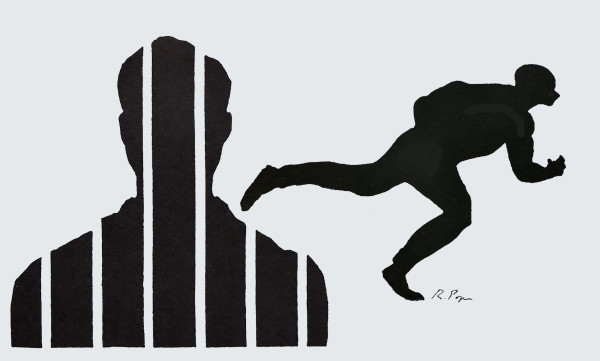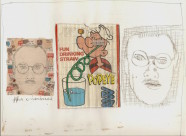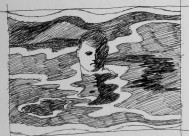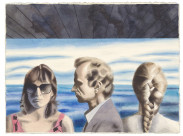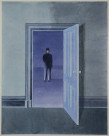Robert first created the image of a silhouetted man with bars superimposed for a book illustration on prison ministry. The bars are both a physical obstacle and part of the man’s body, something tangible, and something internal like an imaginary prison inside himself.
Robert created many versions of the running man, first with a starry sky and then with a map of the city stenciled within his body; the dark silhouette was used to illustrate a magazine story about an escaped convict. Robert could identify with a man running for his life. The contrast of confinement and a wild run for freedom resembles the patient’s experience of hospitalization and fantasies of release.
The theme of the criminal and outcast is an undercurrent that threads throughout Robert’s work. In art school, Robert treated the criminal as a subject of pop culture. Robert illustrated a suspense novel with the drawing of a criminal as a man of guile, disguise and subterfuge. Related to this work is a painting Robert made based on an Alfred Hitchcock film, showing a criminal in a darkened room, visible only by light of his cigarette. In the Elizabeth Smart series, an anti-heroine recklessly pursues love, but to others her behaviour appears unconventional and threatening, eventually leading to her arrest and deportation from America. Here love is like a crime in that it follows no rules and may be deeply disruptive of social conventions.
